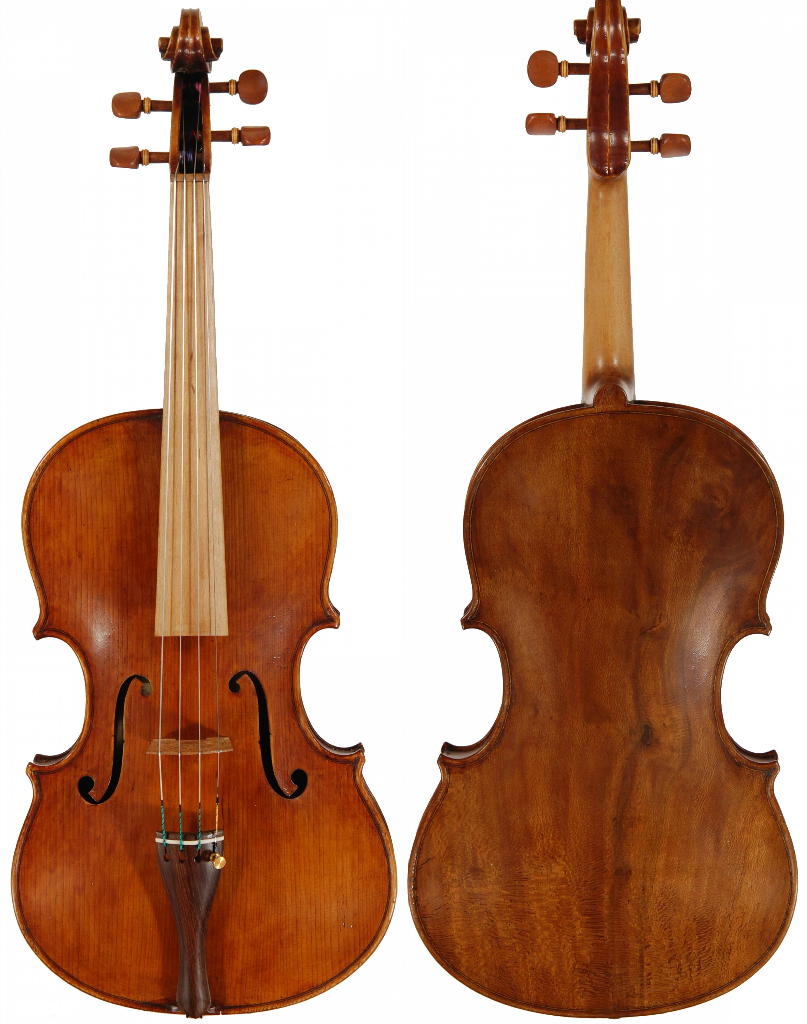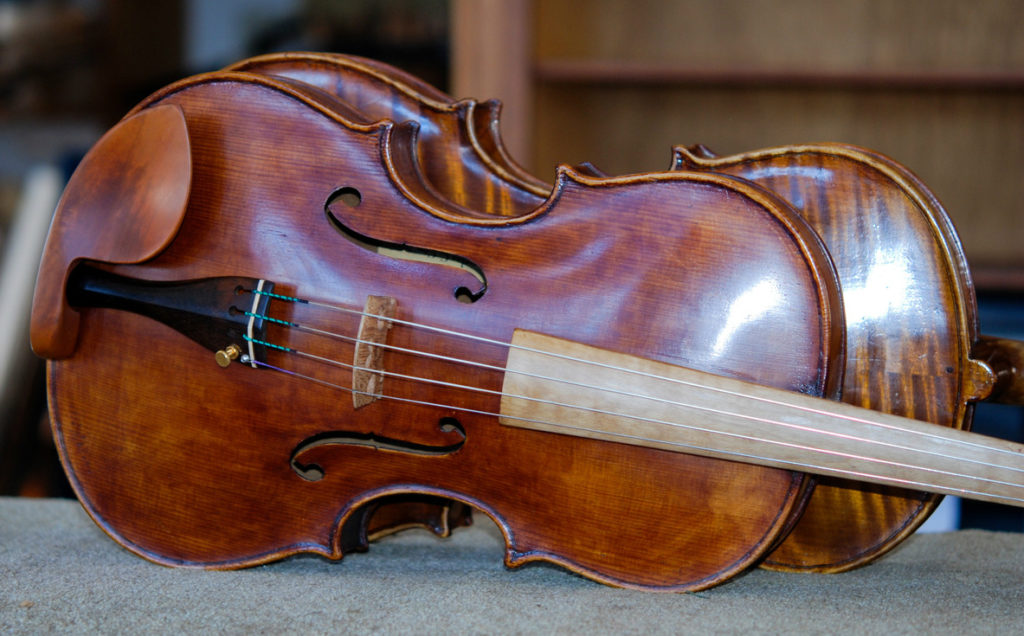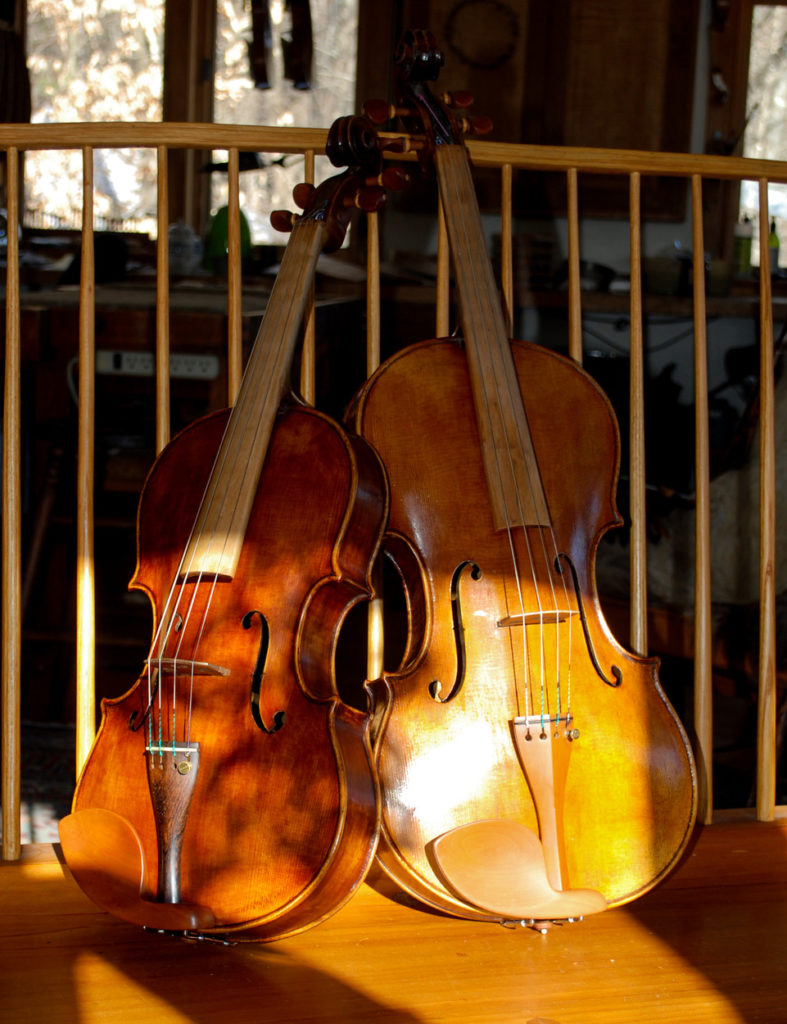There are a number of reasons why people are interested in smaller violas. A violinist who only occasionally plays viola will find the feel more familiar and requiring less adjustment in arm placement, finger spacing, and bow weight to achieve good intonation and tone. A smaller person or one with shorter arms will find them easier to play. Aging violists can be motivated by physical challenges, as the ergonomics of a small instrument are easier to manage. With these benefits, it’s understandable that many people are seeking out violas that have the feel of a smaller instrument but maintain a classic viola sound.
 The major design innovation that I have been exploring in these smaller violas is adjusting the body asymmetrically by shifting the acoustic centerline of the instrument to the treble side at the neck and the bass side at the tailpiece. This allows for easy left-hand access to the upper positions and for the instrument as a whole to remain closer to the player’s body. The line from scroll to tail can be shortened so that the string length is as short as normal strings will allow and the neck-to-body proportion is close to normal. The instrument feels smaller where the body interacts with it but remains larger where the sound resonates. The result is an instrument that is small and comfortable but still has rich, dark resonance.
The major design innovation that I have been exploring in these smaller violas is adjusting the body asymmetrically by shifting the acoustic centerline of the instrument to the treble side at the neck and the bass side at the tailpiece. This allows for easy left-hand access to the upper positions and for the instrument as a whole to remain closer to the player’s body. The line from scroll to tail can be shortened so that the string length is as short as normal strings will allow and the neck-to-body proportion is close to normal. The instrument feels smaller where the body interacts with it but remains larger where the sound resonates. The result is an instrument that is small and comfortable but still has rich, dark resonance.
The characteristic dark viola sound is largely the product of air volume inside the viola. Volume can be maintained in a short instrument by increasing rib height or increasing width, but there comes a point where lack of proportion in these elements leads to a reduction in efficiency and balance in tone. I continue to explore how far these elements can be adjusted and still maintain an overall balance. These violas may appear noticeably asymmetrical, but they maintain classic design principles and details.
The choice of lighter, stiffer wood than the classic maple and spruce is an additional way to deepen the voice of a small viola. Butternut for the back is one very successful wood I have used in this way, as is local sycamore. But this opens up another large topic which must be saved for another time.
Many people assume that for an instrument to be beautiful, it must be symmetrical. Symmetry is appealing, but the world is not symmetrical. If you look at instruments that were made by hand, working by eye rather than mechanically, you will see that the corners are not identical. This is because of the way the hand works. Also, the wood itself sometimes has an asymmetry to it. What seems like a perfect line may not be, because of the wood that the line is interacting with. It’s subtle, but it’s there, even in instruments that appear symmetrical. As a maker, I want my instruments to be beautiful, and I recognize that symmetry is not necessary for beauty and may appear stiff rather than dynamic. So that is another reason for allowing myself the freedom to explore the possibilities of asymmetry.
If you are intrigued by the ease of playing and depth of sound these small asymmetric violas have to offer, make an appointment to come try one out for yourself. I’m happy to meet with you at my Vermont shop or on one of my regular Boston visits. Contact us by email or phone to make an appointment.



